Trees at Night
Ramiro Sanchiz
Translated by Audrey Hall
On the outskirts of Punta de Piedra, there is a bar a good distance beyond the last line of houses. From the untidy plain arises what is essentially a cube of gray concrete with small windows and a parking lot. Actually, to simulate the impression it always made on me when I looked at it—with the houses of Punta de Piedra in the distance and the plain stripped down to what the universe must have looked like hundreds of millions of years ago—I would have to resort to a simple, coarse, improbable image: an art nouveau building on some remote, uninhabited planet.
My grandfather used to go round there on Friday nights, but I wasn’t allowed to go with him. So one day in February 1990, my friend Marcos and I hopped on our bikes and headed north toward the bar. At about five in the afternoon we arrived to find it closed; I remember it was a bit cold and overcast, and the wind had picked up. We pulled up in front of the door, disappointed. It was covered with posters for World Cup tournaments I hadn’t paid any attention to. Marcos, on the other hand, studied them with a bemused expression on his face; besides, there were so many of them that it was almost impossible to see inside. In any case, the interior of the bar was dark. There wasn’t much else to do.
Right then we realized that if we kept following the dirt path that had taken us to the bar, we would end up at the highway, and if we crossed it (something that had previously been unthinkable), we would be free to explore a vast region that we called the Salt Marshes on our fantasy map because we had always seen it out the window of my parents’ or Marcos’s parents’ car on some trip to Castillos or El Chuy. To us, it looked like the landscape around the Nile Delta. After realizing the bar was closed, we couldn’t resist the temptation to take that faintly imaginary trip, full of towering reeds, swampy evenings, and trees with multiple trunks that, more so than trees, looked like the bodies of giant antediluvian beasts disfigured by time. It would be the first time we’d seen that landscape without a window separating us from it: just the two of us, in the early autumn chill of that February afternoon.
We pedaled out to the highway and beyond, where there were no roads or electrical wires, and soon we found ourselves in front of a kind of copse. It would have been impossible to turn back then (since it was already almost six o’clock and if we were a little late coming back home, we’d be in trouble), so we dropped our bikes and went in on foot. After a while we arrived at rather a small lake, more like a pond full of green, stagnant water.
Surrounding the lake and separating it from the woods was a belt of sand that was cool and damp to the touch, squirming with insects and tiny worms. On the sand, a few meters from where we stood, we saw something that must have been the remains of some animal in an advanced state of decay; Marcos headed straight for it. I tore a branch from a tree and followed him.
It wasn’t easy to tell what animal those shapes belonged to. For example, there were parts comparable to segments of a spinal column, curved and spiked, but we saw no trace of legs, ribs, or skull. Marcos said it must be a giant and slightly deformed capybara, and the few bones missing must have been carried off by scavengers. Maybe, but I was still amazed by the shape of the creature. For starters—looking closer now—the texture of the carcass didn’t exactly suggest decay and we couldn’t smell anything dead; I poked it with the branch, and it seemed to me that the skin (or whatever it was) was as stiff and hard as crystal. It’s a tree trunk, I said. It was probably in the water for a while and turned out like this. Marcos had found another stick, and between the two of us we tried to flip it over. It didn’t budge an inch: it seemed to weigh tons, or else it was nailed to the planet’s surface, like a rocky outcrop . . . which it might have been, of course, but we couldn’t help seeing something organic in it, some texture, some organized pattern that, up close, seemed to imitate veins, capillaries, or nerves. Marcos took a few steps back and called my name: he’d seen something different from his new perspective, which he pointed out to me. It was shaped like an arm, ending in what looked like a bird’s talon or a dinosaur’s claw, with fingers and nails. At least, that was what I saw, but Marcos said it must be the creature’s skull. I walked around the body and searched for what I had originally taken to be the spinal column; I couldn’t find it. Now it looked like an animal with radial symmetry, the kind that I—having read my Uncle Hilario’s old encyclopedia of natural history—understood to be an essentially primitive life form, one that was far removed from any path that evolution had taken on Earth.
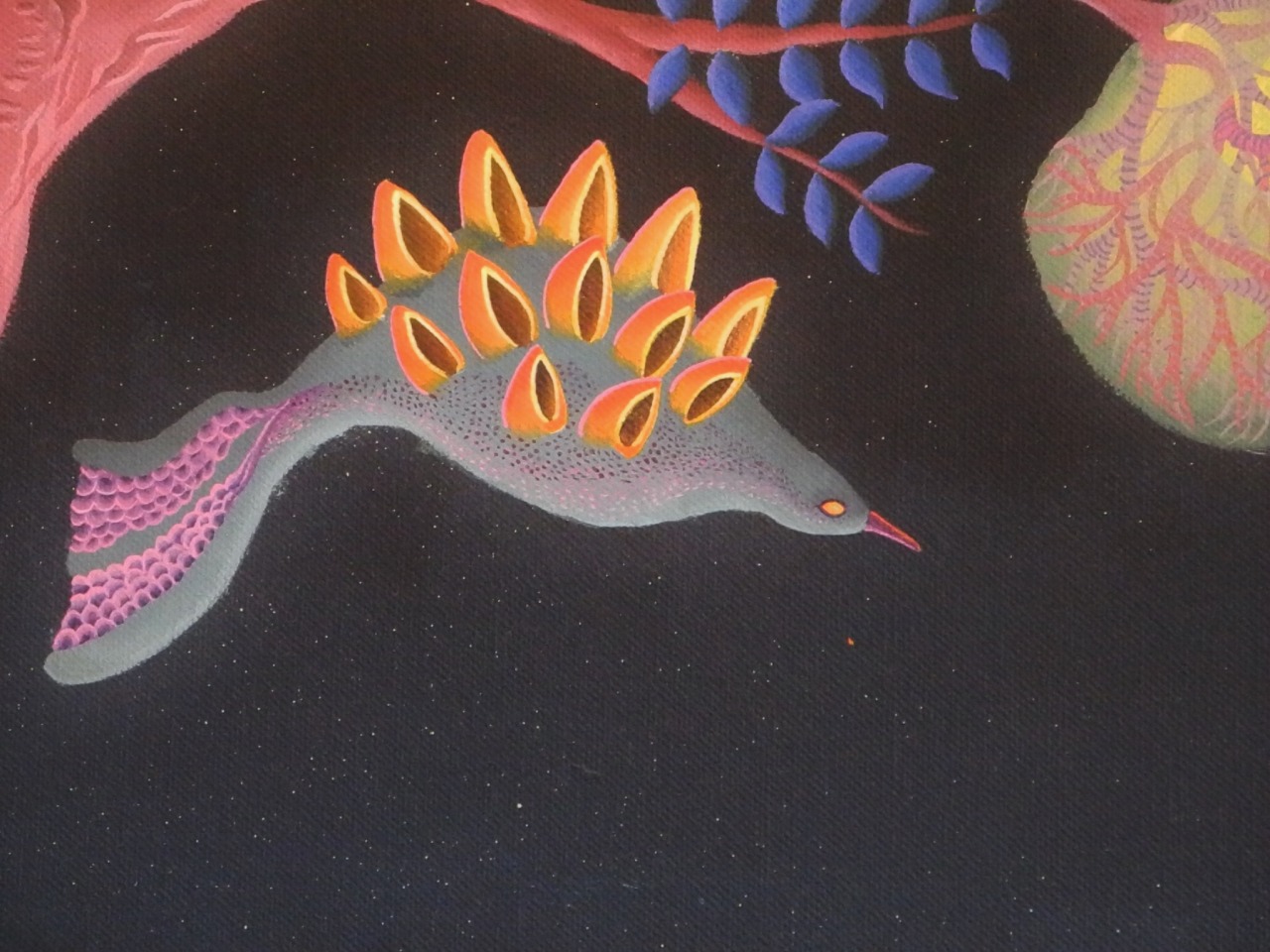
Remembering that feeling of disgust now brings with it the same blend of shock and terror that trees at night have always inspired in me. Of course, at any time I can look at them without really seeing, registering only a superficial level of perception: the colors, the distribution of their branches, the shape of their leaves, the ridges of their bark, or the presence or absence of flowers, pinecones, or nuts; but if I focus my efforts in one direction, I can reach a state in which the tree—so unlike any morphological paradigm repeated throughout the animal kingdom—reveals itself as an otherworldly creature, an alien. And I can very easily access that sensation at night, when the trees look as if they’ve been ripped from their natural habitat, which is light, and stuck in city spaces (a vacant lot, more specifically, or one of the big mansions in the Prado district, or even a park or a densely wooded block) as intruders, ghosts, or shadows of another reality. On those occasions, faced with that strangeness and with the apparently chaotic branching and multiplying of leaves that seem to follow the fissures and ridges of space, which are invisible to animals, I feel as if I’m standing in front of a fundamentally incomprehensible creature that is blessed with a sort of consciousness that I will never be able to grasp. They are obviously solar-powered devices—artifacts of an earlier, forgotten technology—yet they are no less obviously alive. As such, they make up a whole that is stranger than any animal (whose movements, joints, and dynamic life in pursuit of sustenance seem much more familiar and comprehensible to us). For example, I remember pausing before the massive, flattened tree shapes (like ferns trapped inside a big, heavy book) cast by various green light reflectors in some party room, probably back in 1993; I also remember one night when I gathered my courage and climbed a tall fig tree behind a friend’s house, when I melted into the tree and its branches and trunk became extensions of my body.
But the dead creature by the lake wasn’t a tree trunk. Soon it became clear that its shape mutated depending on our vantage point and that even the insight we had gleaned from a particular point of view would alter dramatically if we moved to a different perspective and then left that point after a while to return to our original position. Thus what had initially appeared to be a spinal column quickly became one of those fossilized axes of conceivable radial symmetry; but then it turned into an appendage, a tentacle, a kind of pointed arch, like that of a gothic cathedral or the roof of a Volkswagen Beetle. So I don’t remember whether it was Marcos or I—though I do remember it was already getting dark—who suggested that it must be an extraterrestrial.
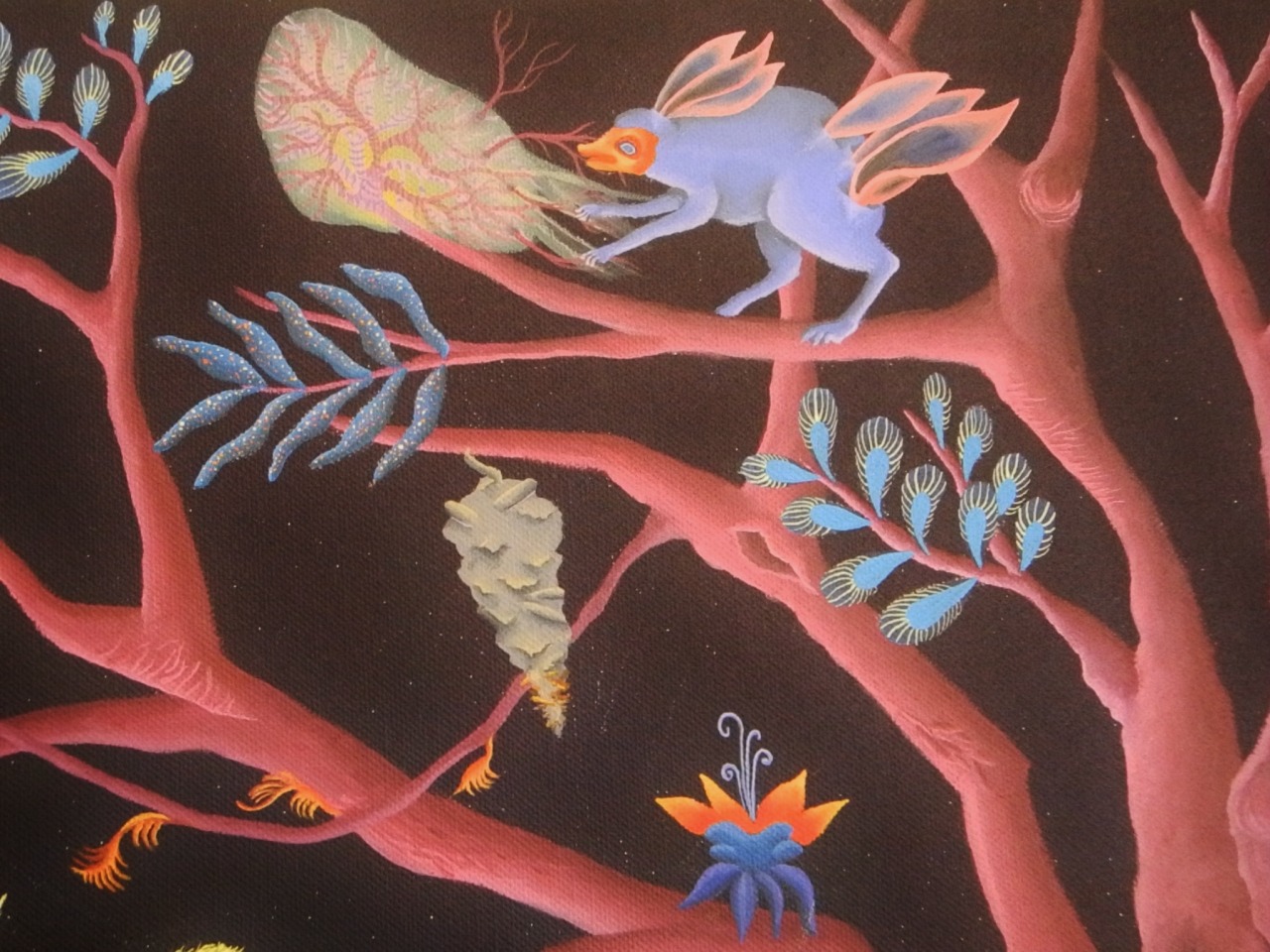
The idea that it was an alien had probably occurred to us because of some movie. Although most aliens in movies were essentially anthropomorphic—and not just in the most obvious sense of how their bodies were configured—one exception was Alien, where the eyeless creature behaved in a way that made it difficult to conclude whether or not it was intelligent; and another was Solaris, which we’d seen without understanding most of it, except the part where the whole ocean, like a gigantic amoeba, was an extraterrestrial being. It’s true that now I can’t exactly pinpoint when I saw either of those movies. I do remember Alien—it was in the horror movie marathon cycle that Montevideo’s Channel 4 aired every Friday starting at 10 pm—but I’m less certain about Solaris, since my first solid memories of movies and books date back to ’94 or ’95, when I joined a group of science fiction writers led by Emilio Scarone, though I do feel that when I commented on the movie at the time, I affirmed that I had seen it before. In any case, Marcos and I had definitely seen Cosmos, where Carl Sagan maintained in one of the episodes that extraterrestrials, if they exist, must be thoroughly different from the animal or plant forms we see here on Earth. That concept must have led us to conclude it was an alien. What else could it be? It wasn’t a carcass—the lack of evidence of decay made that clear—but it wasn’t a tree trunk either. Maybe it was something artificial, a sculpture for example; but adopting that hypothesis would have made it very difficult to justify the dramatic changes in shape (or even structure) depending on the angle.
If I had to try and explain it today, I would say that since we were dealing with an alien life form, its structure was probably so foreign to the concepts and perceptions possible for the human mind (shaped as it was by centuries and centuries of culture) that the creature wasn’t entirely visible somehow, as the only way we had of perceiving it was to give rein to our imagination, which lavishly and instantly reconstructed those impossible forms to spare us from having to contemplate the void, or what would otherwise be an intolerable breach in reality.
In any case, Marcos and I didn’t arrive at that conclusion at the time. Instead, we convinced ourselves that we had a dead extraterrestrial on our hands. Maybe its ship had crashed a few days back and the creature had managed to crawl into the woods and reach the lake or pond, only to die from consuming the water, the microorganisms in it, or who knows what other deadly biochemical quirk. It could also have been lying there under the water for centuries, and in the slow process of drying up or shrinking, the lake might have finally left it exposed on the sand. For us to find.
First we decided that we couldn’t tell anybody, believing that any outside intrusion would separate us irredeemably from the creature; we figured that teams of scientists would descend in the blink of an eye, fence off the area, and make it impossible for us to come near it again. Secrecy, then, was crucial: in front of Marcos’s parents and my grandparents, we had to act as if nothing had happened, as if all we’d done was go for a long bike ride within the Punta de Piedra city limits.
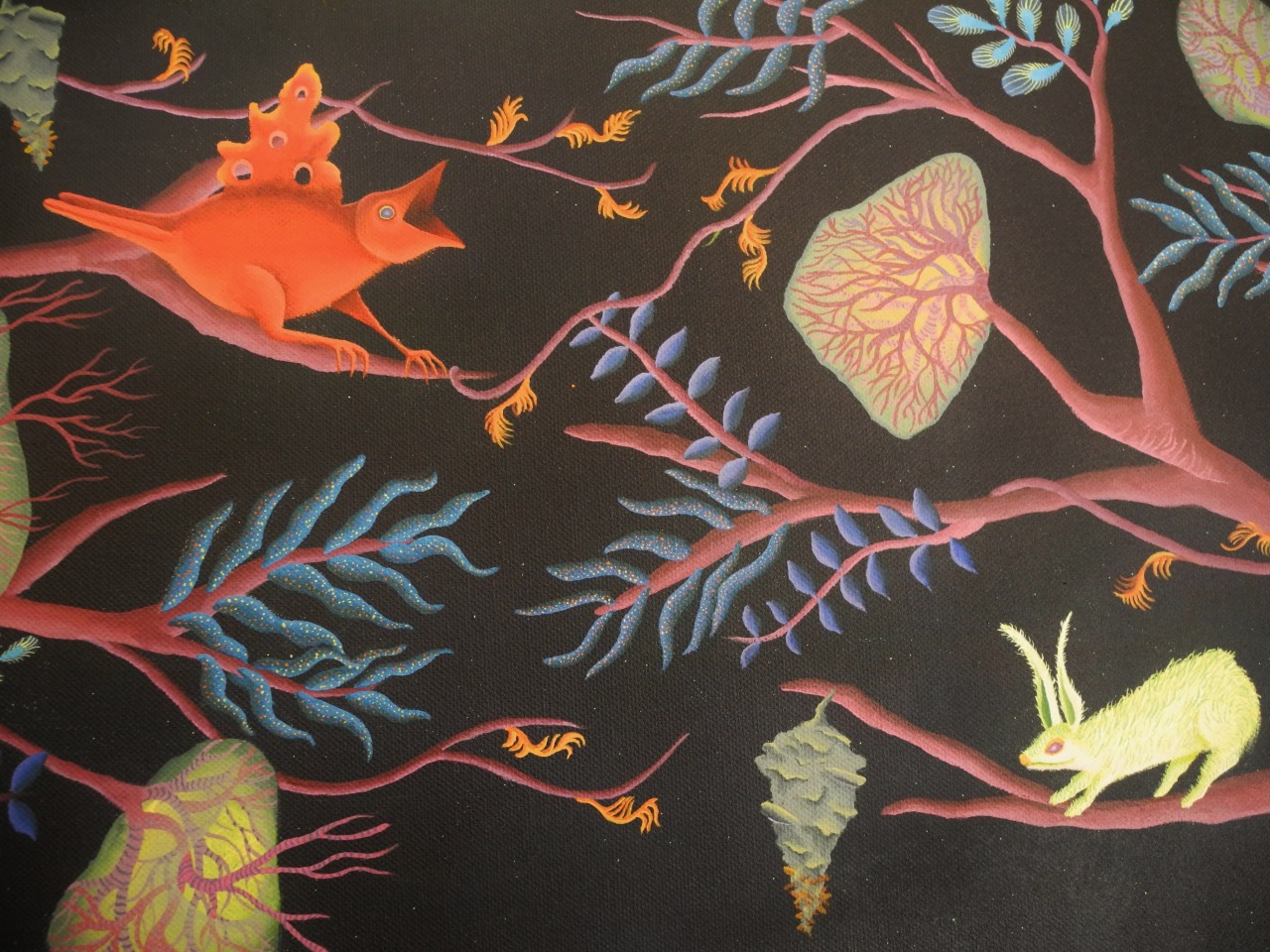
I don’t remember how long we crouched beside that thing, but soon it grew dark and we knew we had to go back. Staring at it had the same effect as hypnosis, as if it blurred the world around us: the trees, the lake, the landscape north of Punta de Piedra, a kind of bleaching of our perception or the annulment of anything our brains could devise.
Only much later did I imagine entire cities arising from those shapes and textures, that blackish color with occasional ripples of blue or green, that intricate and infinite coarseness, those branching, proliferating patterns that forced us to examine them as one does a fractal, each second of the act of perception subdividing (and branching) into countless intervals of time in which we couldn’t help losing ourselves.
At the same time, we understood that it was the most important moment of our lives, that the long search for something new in the world could never result in anything greater than what we had found and that all the rest, from the Temples of Angkor Wat to the underground churches in Ethiopia, from the most advanced war game to the orbiting space stations that we projected for the near future, from the most powerful computer to the fastest particle accelerator, could never be anything truly different, never be anything outside of what was human, outside of what we were made of. Machines, great works of art, architectural marvels, even the wonders of nature—all of that was inside: it was inside us, it was part of what made us human, the furniture or walls of our minds. The extraterrestrial, on the other hand, was a real outsider; underneath the dance of intricate and changeable forms, there was something that put us in contact with the incomprehensible, something that emptied or destroyed our minds only to gradually rebuild them in accordance with other principles. We felt like two immortal travelers who had wandered the world and its epochs thousands of times over and, when everything seemed lost and nothing could tear them from the grip of a most terrible and desolate weariness, found themselves face to face with a marvel that would strip away layers and layers of exhaustion and worldliness on contact and transform them into two eleven-year-old boys, who would be freer, better able to merge with the new, to assimilate it, to make it circulate—inside this time—and change it forever.
So we looked at each other, dazed, as if we were still floating in a slow awakening from a deep dream; without thinking, I knelt in the sand and touched the creature.
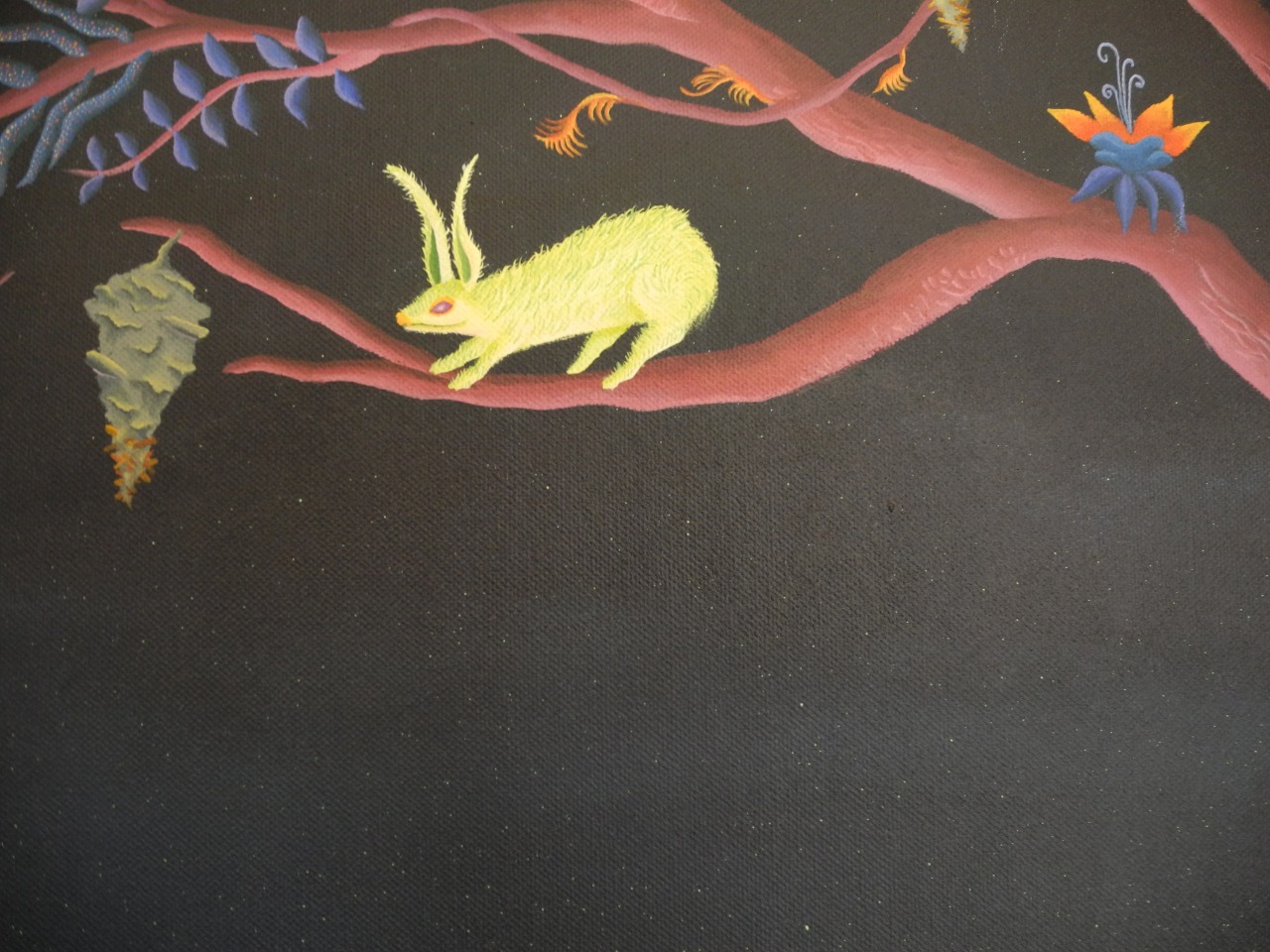
When we got home, after the inevitable scolding, I ate dinner with my grandparents in front of the television. I don’t remember anything else about that night, and if I try to describe myself sitting at the table, I can imagine only my lost look, my absorbed expression while my grandparents chatted about the television program or the events of the day. I went to bed early and could barely get through even a few lines of the book I was reading at the time. Within moments I was asleep and dreaming: now I was wandering through a dazzling city that was either the place inhabited by the species we had found or itself a living being. In the dream I wondered whether I was inside the creature or whether the one we had found with Marcos was merely a fragment of an alien life form or of the vehicle that had brought it to our planet. In my memory the dream occupied the whole night and yet lasted only a few minutes, during which I ventured down those strange avenues, contemplating the creature. When I awoke, my grandmother was holding a cold damp cloth to my forehead. I wasn’t in my bed in the garage anymore. Instead I was in my grandparents’ bed, propped up on cushions. I tried to speak, but I could only whisper what I felt as I would a shameful regret. My grandmother asked me to be quiet; I’d never seen her so worried, probably because of what I’d raved about during the night while in the throes of fever. A little while later, a doctor arrived from the outpatient clinic in the old neighborhood. He spoke to my grandparents for a long time, though I couldn’t understand a word. I must have slept again, because my next memory is seeing my grandmother at my bedside once more, this time bathed in twilight. By then I could speak a little more, and I asked her what was happening to me. She answered that I still had a slight fever and needed to rest. And she told me that I’d been unconscious for almost four days and had managed wake up only this morning. I’d been taken out to Castillos, where doctors examined me but couldn’t come to any real conclusions about the supposed virus. The recommendation, if you can imagine, was to bring down the fever and wait.
I don’t know precisely how many days I spent in bed. On what felt to me like the following morning, I thought of the lake and the creature immediately upon waking, but I also felt certain that I had been there a few times, at various times of day, sometimes with Marcos and sometimes alone. I also recalled that I had camped next to the thing for more than one night, which was impossible, since there was no way my grandparents would have allowed such a thing (not that I would’ve wanted to anyway, at least not under normal circumstances). But there it was in my memories: I saw myself seated on the lakeshore, splitting my gaze between the alien and the sky—not the stars, but the sky, pitch-black—and it was as if there were something worth investigating, some detail I was missing that I would now have to track down as if it were a puzzle piece on a vast table and I had a small-scale model of the original image next to me and I had to stare stubbornly at it to detect patterns that had escaped me in the chaos of all the other pieces.
I also remember how the creature had showed obvious signs of deterioration the last few times we visited it. The shapes that had changed depending on the angle didn’t look the same as they had on first glance, and there were structures that seemed to freeze and remain there until the following day, while at the same time huge chunks of the body were disappearing with marks of having been torn or gnawed by animals. Marcos said that if we searched the woods we might find the pieces that were missing, and it occurred to me that a search like that was certain to have consequences, as if the strangeness of the extraterrestrial thing could somehow merge with the trees and the landscape like an ink blot spreading through capillaries on the map, reaching Punta de Piedra and, from there, the entire coast and Montevideo and maybe even the whole world.
That night I felt better. My window had been left ajar and a light breeze was blowing in. My grandmother was asleep in the little bed that I had used when I was little. I got up and wandered through the house. There were things belonging to my parents—clothes and bags, mostly—and in my bed in the garage I found my mother, who was also asleep (in a soft sort of way, it seemed to me, which helped me realize that I was truly well, that the worst was truly behind me). On the dining room table I found my father’s watch: it was one thirty in the morning on February 24, which made me think that it had been weeks, not days, and that I’d been unconscious much longer than I’d guessed. When had my parents come back from Montevideo? And where were my grandfather and father? On top of the refrigerator, there was always a flashlight sitting in a fruit basket; I grabbed it and returned to the garage. I ran its circle of light over the walls and saw that a few fishing poles were missing, along with the buckets, a holding cage, and a lantern. Clearly they’d gone to catch fish, blinding them first with a bright light. I didn’t often accompany my grandfather on these night fishing sessions—they bored me to no end, and I was always afraid of the trees at night—but this time I was dying to move my body in the fresh, salty air, to run down to the beach, look for my father, and let him know that I was better, that I was back, that I was strong enough to stay there with him, fishing with my grandfather and him. The front door was locked; but the back door, the one to the kitchen, was not. I put on some Bermuda shorts, sandals, and a T-shirt and crept noiselessly out the back door. After circling the house and heading up toward the road, I glanced back: the pines looked like animals asleep in a huddle at the bottom of their den. It was a luminous night, brimming with stars. I held the flashlight out in front of me and yelled their names. The wind had picked up a little, so my voice must not have reached them. I walked a little further and yelled again, and that time they heard me.
Image: “Forest” by Caro Maranguello
[ + bar ]
Yolanda Castaño
“Aquí o que nos falla é que non nos sabemos vender”, queixábase seguido o teu patio de veciños; pero cando chegou para o quinto dereita aquel tipo que si o sabía... Read More »
Alternative Scenarios For Lovers
Szilvia Molnar
1. I come home to a burnt-down house in Lund. You’re back in Malmö. I’m watching my parents gather half-scorched photographs in... Read More »
Marilyn Monroe, my mother
Neda Miranda Blažević-Kreitzman translated by Ellen Elias-Bursac
Many people wrestle with discomfort and fear when they travel by air. Dino Lučić and Veljko Linić were... Read More »
Everything Good That I Know I Learned from Women
Tryno Maldonado translated by Janet Hendrickson
1
My mother is a teacher. A preschool teacher. If you want to fuck up a man’s amorous relationships with... Read More »
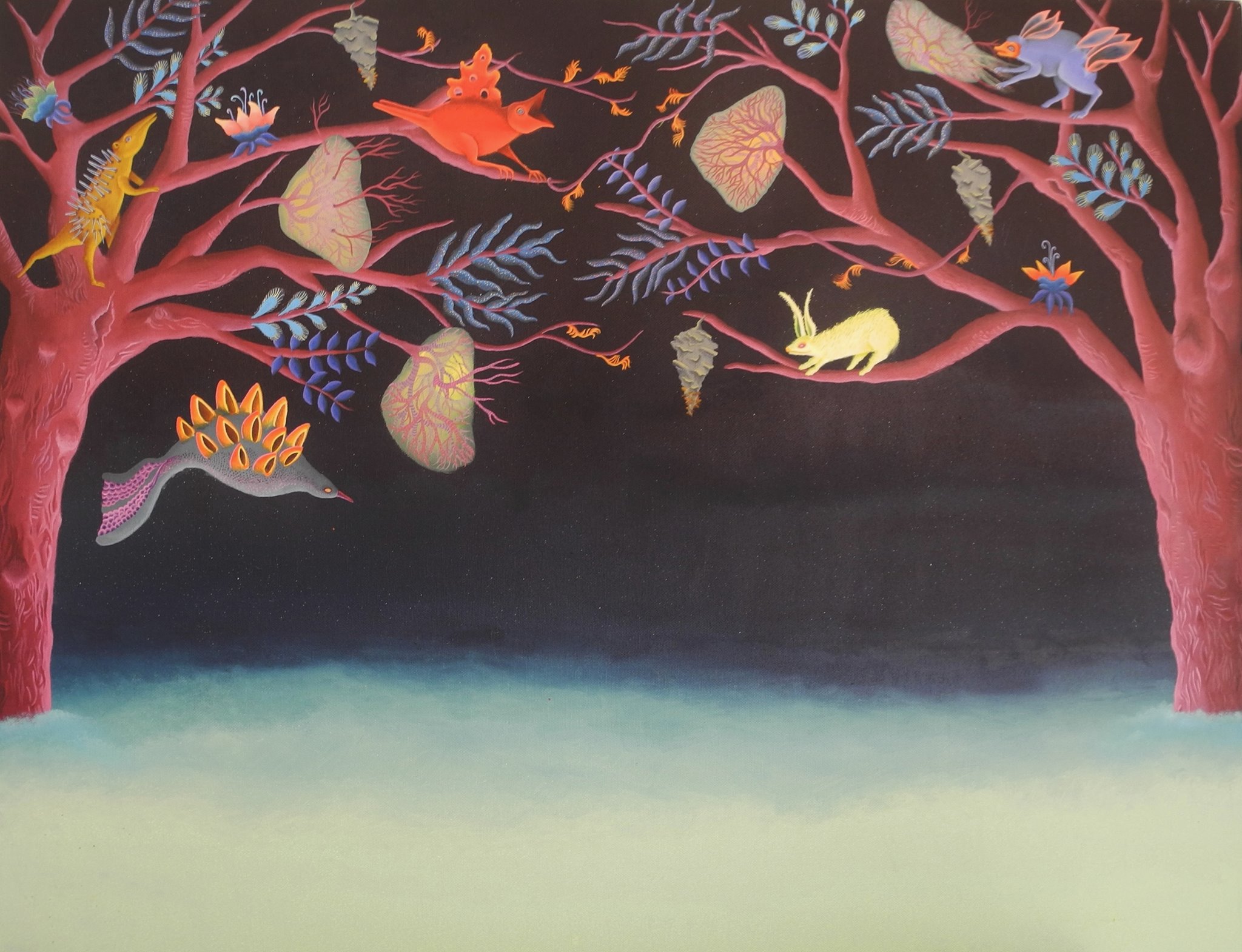

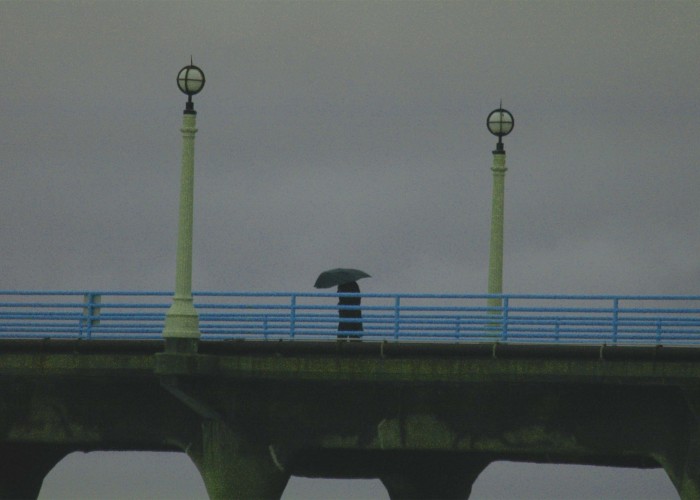
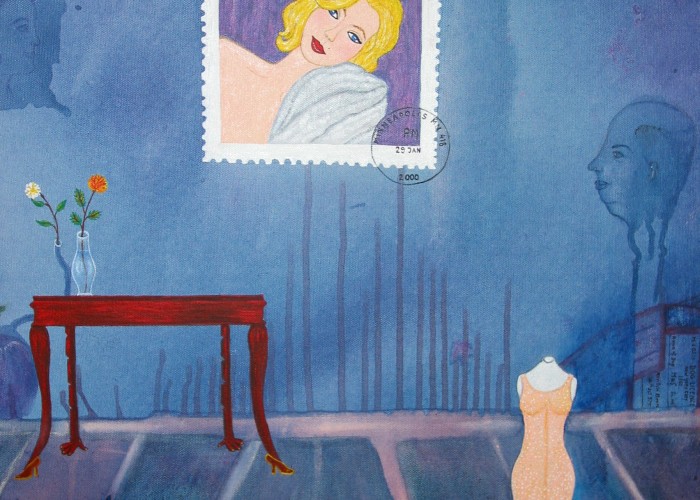
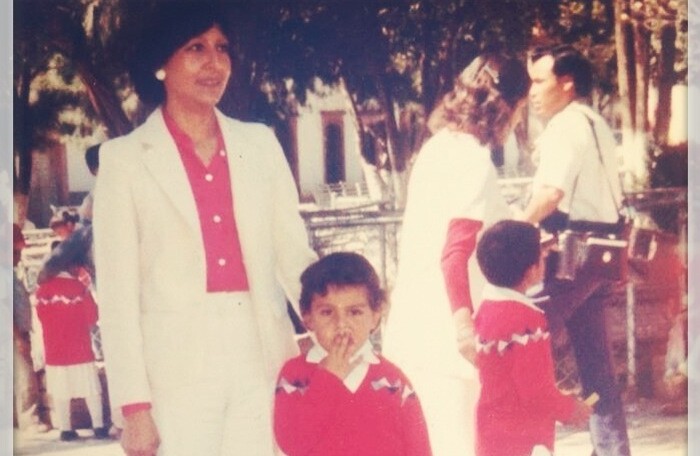



 sending...
sending...